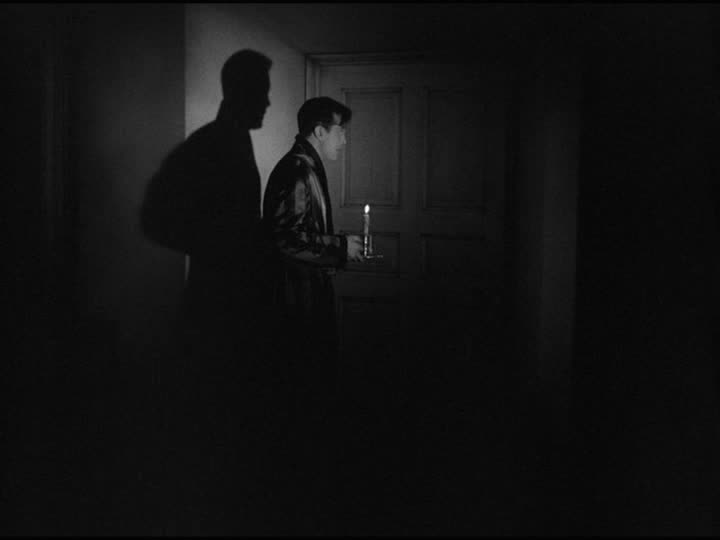Boo! It's "Oscar Horrors". Each evening we look back on a horror-connected nomination until Halloween. Here's Tim Brayton on a '40s ghost story...
The Uninvited (1944) is a rarity among 1940s horror films twice over. For one thing, it's one of the vanishingly tiny number of genre films from that decade to receive Oscar attention, nabbing a Best Cinematography nomination – which is why we're here now, of course. For the other, it's one of the almost-as-tiny number of American horror films of its generation that actually commits to the paranormal. For years, stretching back into the 1930s, almost any time you saw a Hollywood film set in a haunted house, it was an easy bet that by the end of the last reel, you'd find out it was just an elaborate ruse by jewel thieves or some other damn thing. Not so for The Uninvited! Its ghost is real, and presents a genuine danger.
The film's readiness to tell an old-fashioned ghost story without apology or restraint is undoubtedly connected to the recognition given to Charles Lang's deeply shadow-soaked cinematography.

Simply put, The Uninvited wants to give you a nightmarish case of the creeps, and one of the primary ways it does that is by going all-in on a thick atmosphere of nighttime interiors, barely lit except for lonesome candles, or as close as the cameras and lenses of 1944 were able to get to "lonesome candles".
It's worth pointing out that the bravura nighttime sequences which surely netted Lang that nomination only constitute a short portion of the film's running time (this is, indeed, part of why they make such an impact). This isn't to say that the daytime scenes are deficient in some way. Charles B Lang, who received a record-tying 18 Oscar nominations across 42 years, was nothing if not a top-level artist, and every bit of The Uninvited looks gorgeous, with the dramatically overcast Cornish coast (played, persuasively, by central California) possessing a certain monumental Gothic sternness no matter how relatively bright things get.

But there's no question that the star of the show is Lang's facility for working in extreme low-light conditions. It's a phenomenal exercise in cranking things down to the slightest whisper of lighting, just bright enough that we can really tell how much we can't see. If nothing else, it's a technical achievement of the first order, with Lang showing off throughout how to use studio lighting to mimic flickering candlelight, gently and almost imperceptibly wavering the light's intensity to further the illusion. He even at one point attempts to re-create the briefly intense flash of a match being lit onscreen: the results aren't perfect, but it's a bold attempt.

That being said, this is much, much more than just a technical achievement. While it's probably impossible for a film from the 1940s to remain genuinely scary in the 21st Century, The Uninvited comes as close as anything else I've seen. The cinematography might very well be the primary reason why. This is an extravagantly atmospheric movie, full of dark rooms and huge swaths of jet-black shadow curled around the edges of the frame where the characters' meager lights can't reach. It is an exceptionally successful attempt to use negative space within the image to suggest things unseen and unseeable, dangerous and creepy things; it's also not above using the lighting itself in distorted, exaggerated ways to make things seem off-kilter in the best Expressionist tradition.

Is it, truly, "frightening"? Probably not if your age runs to double digits. What it is, however, is consistently and convincingly spooky – you can feel the chilly, haunted emptiness of that house, and the sense of unearthly stillness in isolation that can make even an innocuous house seem like it's up to no good, when the lighting is just right. What we have here, really, is a campfire story: long on moody descriptions and the perfect accompaniment to a moonless autumn night.

Season 3 Oscar Horrors is a Wrap
The Bad Seed - Supporting Actress
Bram Stoker's Dracula - Makeup
Dr Jekyll & Mr Mouse -Animated Short
Flatliners - Sound Editing
Fatal Attraction - Film Editing
Kwaidan - Foreign Film
Misery - Actress
Pan's Labyrinth - Production Design
The Sixth Sense - Picture
Sleepy Hollow - Production Design
Sweeney Todd - Best Actor
Whatever Happened to Baby Jane? - Cinematography